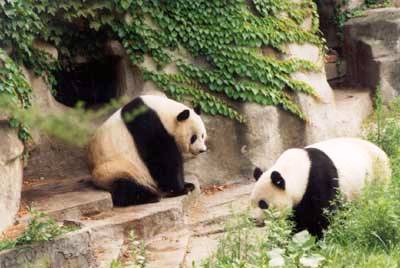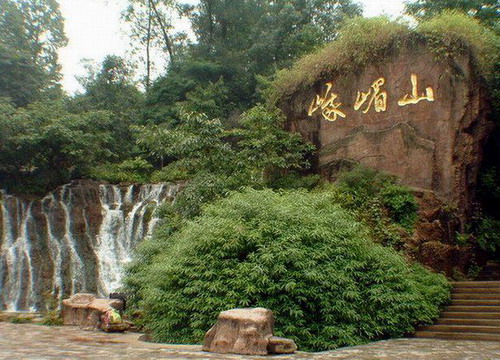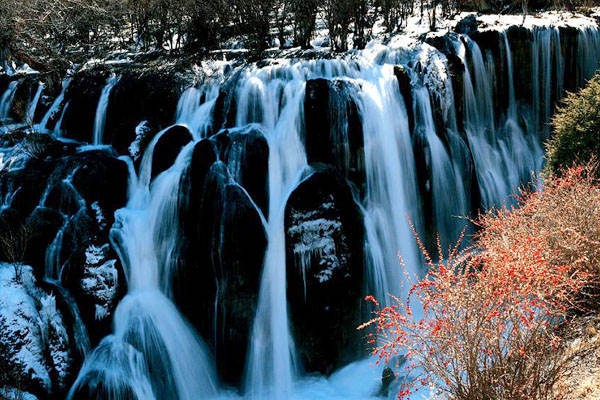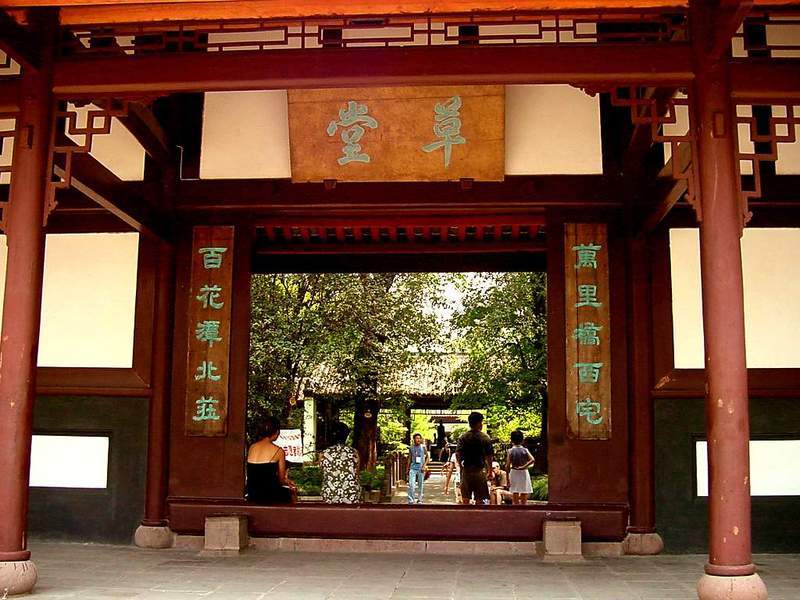Huanglong
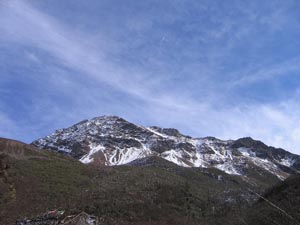
Lying at the eastern rim of the Qinghai-Tibetan Plateau, the Huanglong Valley is remarkable for its karst landscapes. Linked by travertine shoals, rapids and waterfalls, and set off by snow peaks and lush green forests, over 3,400 travertine ponds glitter brilliantly in the sunshine. The entire scenery is evocative of the dwelling place of the Queen Mother of the Western Paradise, hence its nickname "jasper lake in the mundane world". As a region inhabited by various ethnic groups-the Tibetan, Qiang, Muslim and Han nationalities, it is also characterized by the exotic folk customs of these ethnic minorities.
Huanglong consists of the core scenery of the Huanglong Valley and peripheral scenic spots such as Danyunxia (the Red Cloud Canyon), Hongxingyan (the Red Star rock), Xuebaoding (the Snow-Covered Peak), and Munigou (the Muni Valley). It is best known for the "Five Wonders", namely, the travertine colored ponds, the limestone shoals, the snowy peaks, the fascinating ravines and the forests.
There are two versions about the origin of the name of Huanglong. One is that it was names after the Buddhist Temple here-the Huanglong Temple. Legend has it that in prehistoric times, after helping King Yu to harness the rivers, Huanglong (the Yellow Dragon) settled down here as a reclusive and eventually achieved immortality. Another version attributes the name to its unique landform. Since the Huanglong Valley is in a glaciated alpine gorge gradually rising up and running from the south to the north, the spectacular travertine flow meanders its way along the golden riverbed from the summit down the slope, much like a golden giant dragon winding its way across the snowy mountains and through the dense forests. In 1993, it was inscribed on the List of World Natural Heritage by UNESCO.
Huang Long Temple (Yellow Dragon Temple)
The temple lies at the foot of Snow Treasure Peak, the major peak of Mt. Minshan. With a distance of about 20 miles off the entrance of the valley, it provides a retiring place for the visitors. The whole temple consists of three small ones; the front, the middle and the rear temples, which mark the head, the waist and the tail of a dragon respectively, going all the way down the valley. The front temple has almost been ruined. The middle temple has five halls remaining, to worship the Goddess of Mercy, and the 18 arhats. As for the rear temple, it enshrines the Dragon King.
On the 15th of every sixth lunar month, the day when the yellow dragon was said to achieve his Buddhahood, a big temple fair is held in the rear temple. 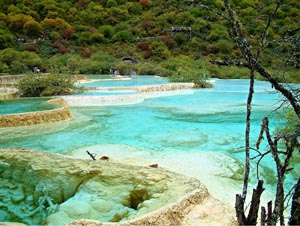 At that time, local people of different groups come to attend, praying for good fortune and bumper harvests. Young people also find it the best time to tell sweet words to their lovers.
At that time, local people of different groups come to attend, praying for good fortune and bumper harvests. Young people also find it the best time to tell sweet words to their lovers.
Colored Terrace-Ponds
Dotted upward along the valley, the 2300 ponds come into 8 groups, such as the Guest Greeting Ponds, The Flowing Pools of the Waterfall, the Potted Landscape Ponds, the Fragrant Ponds, the Jade-bathing Ponds, etc. The last group, the Five-Color Ponds are the best of all, which perch atop the highest part of the valley, at the back of the rear temple. Amid it stand a pair of stone towers, stone houses with up-curved roofs, which have been there since Ming dynasty (A.D. 1368-1644). Due to varied depth of the ponds and all kinds of mineral pigments and deposits on the bottom, the water reflects a variety of charming colors.
Huang Long Cave (Yellow Dragon Cave)
This huge cave, lies behind the rear temple, and is filled with stalactites. In winter, there are icicles and ice waterfalls hanging inside. Left of the hall in the cave, there are three seated Buddha statues from the Ming dynasty (A.D.1368-1644). Now all of them are coated with a thick layer of lime deposits. To visit the Huang Long Valley, will take 3-4 hours to look around and about another 3 hours for a round trip along the valley. Since there is no transportation in the valley, visitors must walk all the way, it proves to be a tough trip, with its high elevation.
